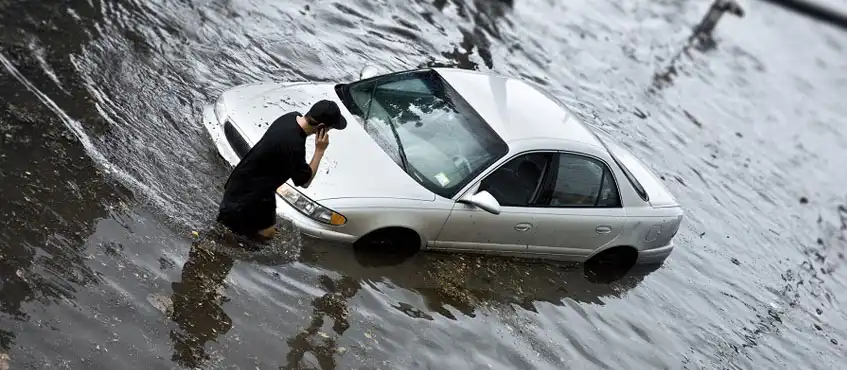
Dealing with a flooded car can be daunting, especially if you need help figuring out what to do. Whether your car has been flooded due to heavy rains, a hurricane, or a burst pipe, it is important to take action quickly to prevent further damage and ensure your safety. In this blog, we'll review some of the most important steps you should take if your car has been flooded.
1: Assess the damage
The first step in dealing with a flooded vehicle is to assess the damage. Depending on the severity of the flooding, your car may have suffered significant damage to its engine, electrical systems, or other components. Before you do anything else, carefully examine your car and determine the damage's extent. If the water level was above the bottom of the doors, your car would likely have suffered serious damage and require extensive repairs.
2: Do not start the car
If your car has been flooded, do not attempt to start it. Starting a flooded car can cause serious damage to the engine, as water can enter the cylinders and cause the engine to seize. In addition, starting a flooded vehicle can be dangerous, as it can cause a short circuit in the electrical system, leading to a fire.
3: Disconnect the battery
To prevent any electrical damage or short circuits, it is important to disconnect the battery as soon as possible. This will also prevent the car from starting accidentally. Be sure to disconnect the negative terminal first, followed by the positive terminal.
4: Call your insurance company
If your car has been flooded, it is important to call your insurance company immediately. Many insurance policies cover flood damage, and your insurance company can help you determine the extent of the damage and provide guidance on what to do next. Be sure to take photos of the damage and keep any receipts for repairs or replacement parts.
5: Dry out the interior
To prevent mold and mildew from developing in your car, it is important to dry out the interior as soon as possible. Remove any standing water with a wet/dry vacuum, and then use fans or a dehumidifier to dry out the carpets, seats, and other interior surfaces. If possible, remove the seats and other removable interior components to dry them out more thoroughly.
6: Have the car inspected by a mechanic
Even if your car is in good condition after being flooded, it is important to have it inspected by a mechanic. A mechanic can check for any hidden damage, such as damage to the engine or transmission, and can ensure that your car is safe to drive.
7: Consider selling or trading in the car
If your car has suffered significant damage due to flooding, it may be more cost-effective to sell or trade it in rather than repair it. Many dealerships will buy flooded cars, even if they are not in perfect condition, and you may be able to recoup some of your losses by selling or trading in your car.
In conclusion, dealing with a flooded car can be challenging, but following these steps can ensure your car is safe and prevent further damage. Remember to assess the damage, disconnect the battery, call your insurance company, dry out the interior, inspect the car with a mechanic, and consider selling or trading in the car. You can get back on the road safely and quickly with the right approach.
If you want to junk a car, call us at 713-454-2715 or visit us at JunkCarBuyers-R.Us.